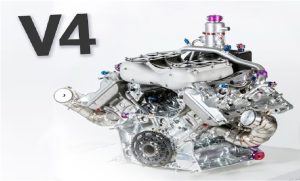Things To Know About Pre-Experimental Designs: Types, Pros And Cons

Pre-Experimental Designs
Research is a vital part of a degree at a higher educational level. It starts from the bachelor’s level, and you have to continue it at other levels of education. Other than the educational sector, research has made a major contribution to my career. Most people take research as their career. For students and professionals, it is necessary to understand different aspects of research. Experimentation is the obvious thing in research, but have you focused on pre-experimentation? As this is an important aspect of research, so you must have an idea about it. Experimental design is the process of dealing with an experiment, but pre-experimentation is to check the validity of the experiment in the preliminary phases. The chance of having split results reduces to a great extent because of pre-experimental designs. As per its importance, this article aims to discuss key things related to pre-experimental designs.
What are Pre-Experimental Designs?
The word ‘pre’ shows the exact meaning of anything. Pre means to do something early. Pre-experimental designs refer to the experiments that are conducted before the actual experimentation. In an actual experiment, you may have to deal with huge data. It can cost high and more effort is required for it. At the time of actual experimentation, you have to follow the designed path as per its standards. It may cause unwanted results in the end. In order to save your time, effort and budget, pre-experimental designs are made. In pre-experimentation, you can take a small sample for the test. Based on its results, you can interpret the cause and effects of true experimentation. The achievement of a goal is made successful through a pre-experimental approach.
Another purpose of pre-experimental designs is to check out the involvement of participants in a particular task. In simple words, you can take it as a justification for participation. Still, you may have been confused about pre-experimentation and how it differs from other designs. You can clear this confusion by comparing pre-experimentation with other designs. You can also get masters dissertation help in this regard. To understand it deeply, let’s compare designs of pre-experimentation and true experimentation.
A Comparison:
For the presence of a control group, the use of true experimentation is always ensured. On the other hand, it is not necessary in the case of pre-experimentation. Furthermore, it is not necessary to target a particular set of subjects to a group in true experimentation. On the other hand, the case of subject selection is different for pre-experimental designs. In pre-experimentation, you cannot make random assignments on a subject. It needs to be specified for a group of researchers. That is how pre-experimentation is different from actual experiments.
What Are Different Types of Pre-Experimental Designs?
There are three types of pre-experimental designs. These types are designed based on a number of tests and their aspects. The three types of pre-experimentation are mentioned below:
- One-shot case study design
- One-group pre-test, post-test design
- Static-group comparison
Let’s discuss these types briefly.
One-Shot Case Study Design
The type of pre-experimental design that works for a single group is a one-shot case study design. As its name is one-shot, it works for a single factor in every aspect. In the case of measurement factors as well as in results, it works for a one-shot. In the case study, you can have pre and post, both scenarios. Here, in the case of a one-shot case study design, you can have post-results of the test only. These post-results are utilised to get the best interpretation. For this, you need to compare post-results with ideal ones. Ideal ones are those results that are expected by you as an objective.
One-Group Pre-test, Post-test Design
The group of the experiment remain the same in this type of pre-experimental design. Here, the difference is between measures and tests. In the case of a one-group pre-test, and post-test design, you have to work on two measures. Also, you need to conduct two tests. One of the tests is a pre-test, while the second one is a post-test.
Static-Group Comparison
This type is the extension of the last two types. In this type, you can contrast two different groups, and both of the groups are treated differently. You have to test one group and then compare it with a non-tested group. The difference between both groups is the actual result.
You can see that the discussion of each type is the simplest explanation of its name. So, it is very easy to remember the name and function of each type.
What Are The Pros Of Pre-Experimental Designs?
The practice of pre-experimentation is getting common because of its pros. The following are some advantages of pre-experimental designs:
- It has a simple and easy process, which is understandable for most people.
- All those who are not professionals can use it, so they can play on the safe side. It is best for fresh researchers.
- Another pro of pre-experimental designs is less human involvement. It is not necessary to have a group for test performance. You can individually perform well in pre-experimentation.
- It provides you with a good chance to test your research skills.
- It is a way to develop new skills required in experimental designs.
- In pre-experimentation, there is no need to work for ideal conditions. You can perform your task in natural conditions.
- It does not require a high budget, so everyone can go for it.
- There is no need to have a proper training session for working on it. You can understand its process with basic steps.
What Are The Cons Of Pre-Experimental Designs?
With a long list of pros, you have to face some cons of pre-experimental designs. These cons are listed below:
- You cannot fulfil all purposes through pre-experimentation. If your objective of work is to compare different variables, it cannot be done with the help of pre-experimentation. Also, you cannot interpret any relationship between different variables.
- As you do not work under ideal conditions, so the results can vary up to a great extent. Things react differently under different conditions.
- The factor of risk related to rationality is high in pre-experimental designs.
Final Thoughts
All of the above-mentioned points related to pre-experimental designs cover key things. Pre-experimentation is not necessary in all cases. Sometimes it is the best choice, and sometimes there is no need for it. By having an understanding, you can evaluate if it is required or not.
You can also check What is the Role of an Abstract in a Research Paper?







